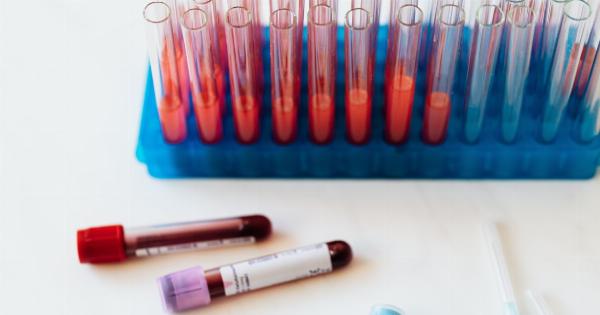Obesity has become a global epidemic, affecting millions of people of all ages and backgrounds. It is a complex condition that involves an excessive accumulation of body fat, resulting in various health complications.
While there are numerous strategies to combat obesity, researchers are constantly exploring new ways to address this pressing issue. One such advancement is the development of a new test that could potentially revolutionize the fight against obesity.
In this article, we will delve into the details of this innovative test and discuss its potential implications and benefits in the battle against obesity.
The Current State of Obesity
Before discussing the potential of a new test, it is crucial to understand the current state of obesity worldwide. According to the World Health Organization (WHO), obesity has tripled globally since 1975.
In 2016, more than 1.9 billion adults were overweight, with 650 million of them classified as obese. Additionally, more than 340 million children and adolescents aged 5-19 were overweight or obese.
Obesity poses a significant risk to physical and mental health. It increases the chances of developing chronic conditions such as cardiovascular diseases, diabetes, musculoskeletal disorders, and some cancers.
Moreover, it can lead to psychological issues such as low self-esteem, depression, and various eating disorders.
The Need for Innovative Approaches
With the prevalence of obesity continuing to rise, it is vital to explore new approaches to combat this growing health crisis.
While traditional methods like diet and exercise remain effective, they often require significant lifestyle changes and long-term commitment. This can make it challenging for some individuals to achieve and maintain weight loss.
Thus, the development of a new test that helps fight obesity offers a promising solution.
Such a test could provide personalized insights into an individual’s unique metabolic profile, enabling healthcare professionals to tailor treatments and interventions to maximize weight loss success.
Understanding the New Test
The new test that could potentially combat obesity is known as metabolic profiling. Metabolic profiling involves a detailed analysis of a person’s metabolism, including the chemical processes that occur in their body to convert food into energy.
The test begins by collecting biological samples from the individual, such as blood, urine, or saliva.
These samples are then subjected to advanced laboratory techniques to identify specific markers or chemical compounds that are indicative of the person’s metabolic state.
Through this analysis, healthcare professionals can gain insights into various metabolic parameters, such as:.
1. Basal Metabolic Rate (BMR)
The Basal Metabolic Rate (BMR) refers to the number of calories an individual burns at rest. It represents the energy required for vital bodily functions such as breathing, circulation, and cell production.
By understanding a person’s BMR, healthcare professionals can develop more accurate and personalized calorie recommendations to support weight loss.
2. Nutrient Metabolism
Metabolic profiling can provide insights into how efficiently a person metabolizes different nutrients such as carbohydrates, fats, and proteins.
Understanding an individual’s nutrient metabolism can help tailor dietary recommendations to optimize weight loss and overall health.
3. Hormonal Imbalances
Hormonal imbalances can often contribute to obesity, making weight loss more challenging.
Metabolic profiling can identify any imbalances in hormones such as insulin, leptin, and ghrelin, which play crucial roles in regulating appetite, metabolism, and fat storage. By addressing these imbalances through targeted interventions, healthcare professionals can enhance weight loss outcomes.
4. Gut Microbiome Composition
The gut microbiome, consisting of trillions of microorganisms living in the digestive tract, plays a vital role in metabolism and overall health.
Metabolic profiling can provide insights into the composition and diversity of an individual’s gut microbiome. By targeting specific strains or promoting beneficial bacteria, interventions can be developed to optimize gut health and support weight loss.
5. Metabolic Rate Variability
The metabolic rate can vary greatly among individuals, depending on various factors such as age, sex, genetics, and lifestyle.
Metabolic profiling can help determine an individual’s metabolic rate variability, allowing for personalized adjustments in dietary and exercise strategies to maximize weight loss potential.
Implications and Benefits of the New Test
The development of a new test for fighting obesity holds significant implications and benefits. Let’s explore some of them:.
1. Personalized Treatment Plans
Metabolic profiling enables healthcare professionals to create personalized treatment plans based on an individual’s unique metabolic profile.
This approach ensures that interventions are tailored to an individual’s specific needs, maximizing their chances of achieving sustainable weight loss.
2. Targeted Approaches for Hormonal Imbalances
Identifying hormonal imbalances through metabolic profiling allows for targeted interventions to restore balance. By addressing these imbalances, healthcare professionals can support healthy weight loss and improve overall metabolic health.
3. Enhanced Understanding of Metabolic Response to Different Nutrients
Metabolic profiling provides insights into how an individual’s body processes and utilizes different nutrients.
This understanding allows healthcare professionals to develop customized dietary recommendations, ensuring optimal nutrient utilization and weight loss.
4. Optimization of Gut Health
By analyzing the gut microbiome composition through metabolic profiling, interventions can be developed to optimize gut health.
This optimization can potentially improve metabolic health, facilitate weight loss, and reduce the risk of obesity-related complications.
5. Motivation and Adherence
Knowing their unique metabolic profile can help individuals understand their bodies better and stay motivated on their weight loss journey.
By personalizing interventions, individuals are more likely to adhere to the recommended treatments, leading to long-term success in managing obesity.
Conclusion
The fight against obesity continues to evolve, with researchers exploring innovative approaches to address this growing global health crisis.
The development of a new test, metabolic profiling, offers immense potential to revolutionize obesity management. By providing personalized insights into an individual’s metabolic profile, this test can enable tailored interventions, improving weight loss outcomes and overall metabolic health.
While further research is necessary to fully understand the scope and effectiveness of this new test, its emergence brings hope for a brighter and healthier future in the battle against obesity.



























